Are you having difficulties reading the DOT number of your tires? Do you want to know how to read tire date codes? If you have lost the receipt of your purchase, you might be having difficulties knowing the exact age of your tires. This issue is common and you can find the solution from your tires. Just observe your tires, you will get the answer.
*Picture Copyright: UTires.com
How to Read Tire Date Codes?Whether you are financing your tires or purchasing them, it is important to understand how to read tire date codes. The numbers are present on tires only. You just need to know how to get them. You might have difficulties while reading codes on old tires. Keep reading to know how old your tire is.
Ways to Get Your Tires DOT NumberLook at all the sides of the tires. There are a bunch of numbers and letters. It might seem like a jumble. But this is helpful information about the tire. Find the number that starts with DOT and followed by ten to twelve series. This code will reveal a lot of things about your tires. You will know the tire size, year, and place of the manufacturing with the unique code of the manufacturer. You can also rent a wheel payments to know more about tires. Once you rent a tire payments, you will not have to be bothered about the manufacturing year. They will take care of this. You just need to look for a rent a wheel return policy to make it more beneficial for you.
Remember that the last four digits of the code are the date the tire was manufactured. You can check the first two digits of the DOT code to know the week of the manufacturing. The last two digits will reveal the manufacturing year. For instance, when it was written in 0203, the manufacturing year was 2003.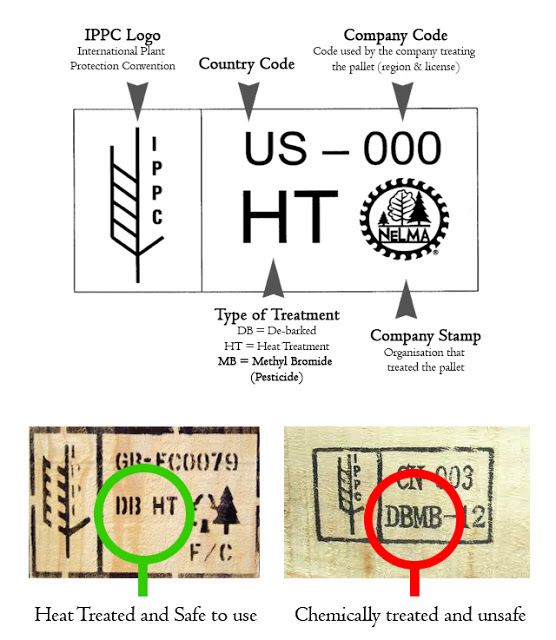 But it is a bit tricky to know the manufacturing year of tires manufactured before 2000.
But it is a bit tricky to know the manufacturing year of tires manufactured before 2000.
You need to check the last three digits of the DOT code. Check the first two digits to know the week. For instance, when the last three digits read 022, you should understand that the tire was manufactured in the 2nd week of that year. You might be thinking about how to know the year. The year is the 2nd year of that decade. It is easy to get confused to know the decade. It might be harder to know the exact decade. There might be some other indications to know the year.
*Image Copyright from kilgoretirecenter.com
What About the Incomplete DOT NumbersIncomplete DOT numbers mean the current DOT regulations demand the complete number to be written on one sidewall only. When you find a few digits on the opposite sidewall, you can check the other sidewall to find the complete DOT number.
Reading DOT Tire NumbersNow you know how to read tire date codes. You can simply check at the sidewalls of tires to avoid any further confusion. Also, never lose your purchase receipt. If you do so, you might not get the warranty benefits. So, keep the receipts in a safe place and avoid any confusion by checking the DOT code. Whether you are interested in learning about wheel alignment or more about DOT numbers, our professionals here at Dan the Tire Man can answer your inquiries.
You can simply check at the sidewalls of tires to avoid any further confusion. Also, never lose your purchase receipt. If you do so, you might not get the warranty benefits. So, keep the receipts in a safe place and avoid any confusion by checking the DOT code. Whether you are interested in learning about wheel alignment or more about DOT numbers, our professionals here at Dan the Tire Man can answer your inquiries.
Are you concerned about the age of your tires?
This quick guide will help you find the manufacture date of your tire and understand how Tires Easy handles tire age based on the DOT Code. Keeping a record of your tires and understanding their age will help you save money on repairs and take proper care of your vehicle.
To find your tires’ age, you need to locate the DOT Date Code on the tire. This symbol indicates the tire manufacturer’s compliance with the U.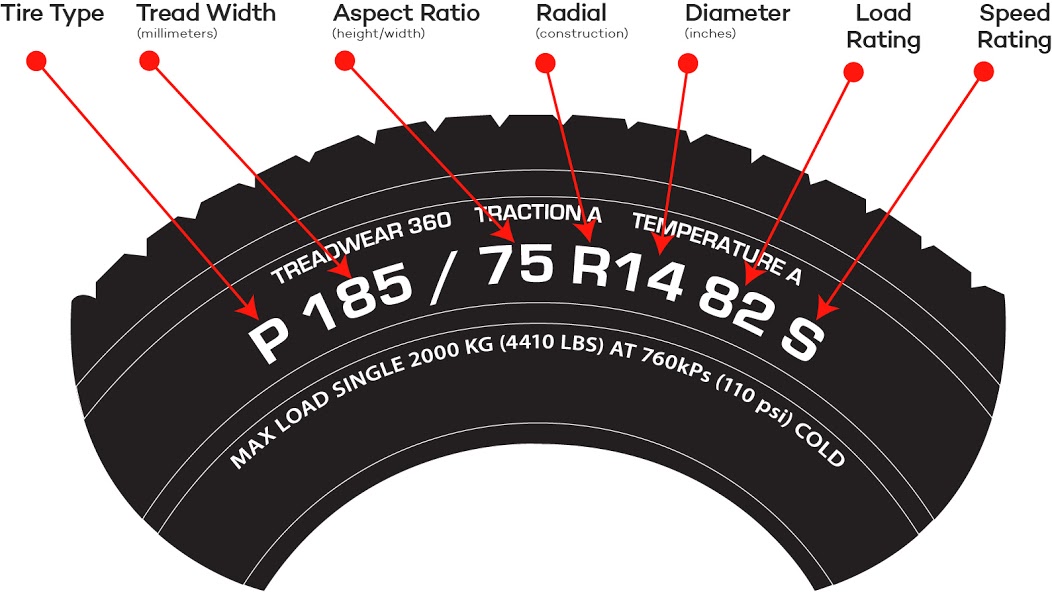 S. Department of Transportation (DOT) National Highway Traffic Safety Administration (NHTSA) safety standards. It tells you who manufactured the tire, where it was made, and other tracking information. Plus, it indicates that the tire has passed the Department of Transportation’s testing and NHTSA manufacturer requirements.
S. Department of Transportation (DOT) National Highway Traffic Safety Administration (NHTSA) safety standards. It tells you who manufactured the tire, where it was made, and other tracking information. Plus, it indicates that the tire has passed the Department of Transportation’s testing and NHTSA manufacturer requirements.
The raised numbers of the DOT Code are placed together and often enclosed in a raised oval. The first two numbers are the week the tire was manufactured. In the example below, 35 stands for “week 35.” The second two numbers are the year the tire was manufactured. In the image below, we see the 07, indicating the tire was build in 2007. This particular tire was made in the 35th week of 2007.
On tires that were manufactured in 2000 and after, the last four digits indicate the week and year the tire was produced. The first two digits identify the week and the second two identify the year.
It’s not always easy to find the tire DOT code. There aren’t regulations on where the manufacturer has to place the information, so you may need to look at multiple sides of your tires before you can find the numbers. However, the identification information is usually on the inner sidewall of tires.
There aren’t regulations on where the manufacturer has to place the information, so you may need to look at multiple sides of your tires before you can find the numbers. However, the identification information is usually on the inner sidewall of tires.
At Tires Easy, we believe that the tire warranty should begin from the date of purchase, not the DOT Code. If you purchase new tires today, and the DOT Code was a year ago, your warranty will still begin on the purchase date, not the manufacture date of the tire.
If for any reason you are uncomfortable with the age of your tires after looking at the DOT Date code, please call us and we can quickly provide you with a return under our 45 day return policy.
Just because you buy “new” tires doesn’t mean they were actually made recently. It can take a while for tires to reach tire retailers after being shipped from the manufacturer.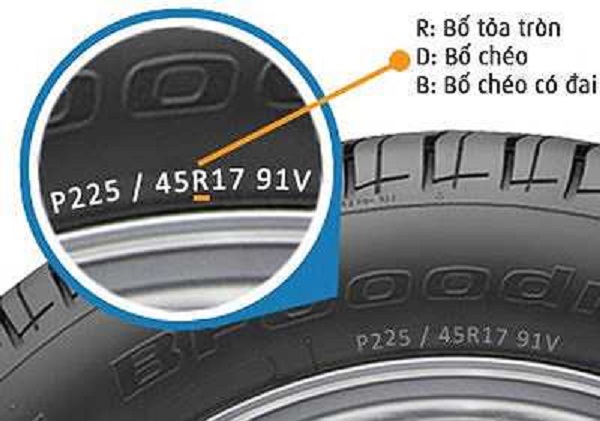 Checking your tires’ DOT Date Code will tell you when they were made and how long they may have been stored. It is important to know that tires are often for months or years at a time, so your tire’s DOT code might not be in the same year you bought the tires, and that’s not a concern.
Checking your tires’ DOT Date Code will tell you when they were made and how long they may have been stored. It is important to know that tires are often for months or years at a time, so your tire’s DOT code might not be in the same year you bought the tires, and that’s not a concern.
At Tires Easy, we take tire protection VERY seriously. Once the tires reach us, they are moved into Tires Easy’s industrial tire warehouses to ensure proper storage and prevent exposure to seasonal weather conditions. Our storage locations are cool, climate-controlled, and dry, preventing any premature aging or damage. Tire aging can be rapidly accelerated by poor storage conditions, so you should be sure the tires you purchase have been properly stored.
A general consensus from various tire industry associations around the world is that tires have a useful service life of six to ten years. As technology changes, there are more materials, and combinations of comounds, to extend tire life and extend wear.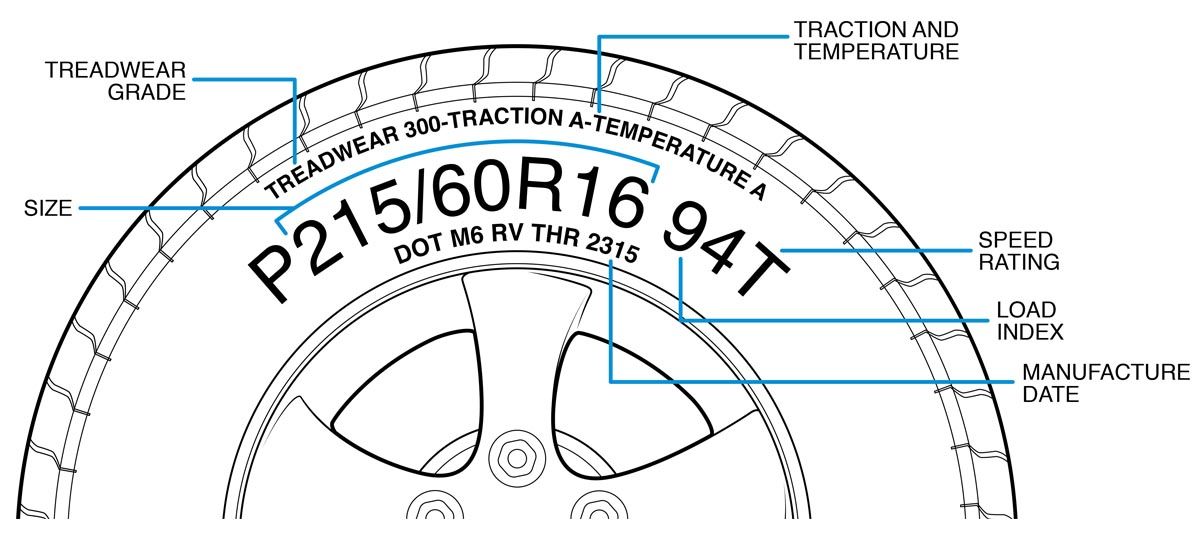 At Tires Easy, we like to err on the side of caution and only sell tires that are seven years old and under. If you consider that the average driver travels 15,000 miles per year, most tires need to be replaced in 4 years. If your tires were a few years old when purchasing, you would still be well within the accepted tire age range. This is especially true if the tires receive the proper amount of care and maintenance over the course of their lifetime.
At Tires Easy, we like to err on the side of caution and only sell tires that are seven years old and under. If you consider that the average driver travels 15,000 miles per year, most tires need to be replaced in 4 years. If your tires were a few years old when purchasing, you would still be well within the accepted tire age range. This is especially true if the tires receive the proper amount of care and maintenance over the course of their lifetime.
Legally, you must replace your tires when the tread depth falls below 1.6 mm. Additionally, it’s recommended that you change summer tires at 3 mm and winter tires at 4 mm tread depth. This keeps your tires at optimal levels of safety.
When your tires reach seven years of age, we recommend that you consider replacing them. Even if the tires look new, it is best to have them inspected by a professional tire installer, so they can properly advise on the safety of the tires moving forward. Spare tires should be checked and replaced as well.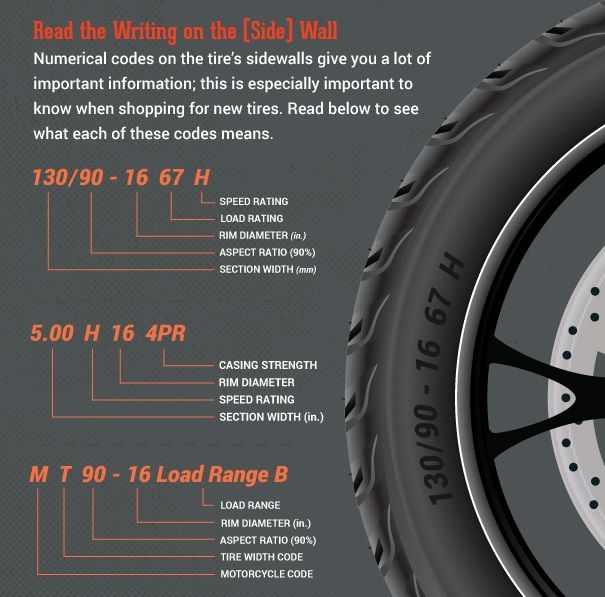
No matter how old the tires are when you buy them, the most important aspect of tire safety is regular maintenance and inspection. According to the The Rubber Manufacturer’s Association of America and the Tire & Rubber Association of Canada.
“Since service and storage conditions vary widely, accurately predicting the service life of any specific tire based on calendar age is not possible.”
For this reason, there is no specific limitation on the age of the tire when it is sold based on its DOT Code.
1. In terms of the DOT Date Code, some might assume that the number states when the tire was approved. On the contrary, the DOT symbol by itself simply indicates that the tire is approved by the Department of Transportation to be legally used on the road. The Date Code is when the tire was manufactured (not when it was approved).
2. You might also have heard that you should only buy tires that have a DOT code within the current year.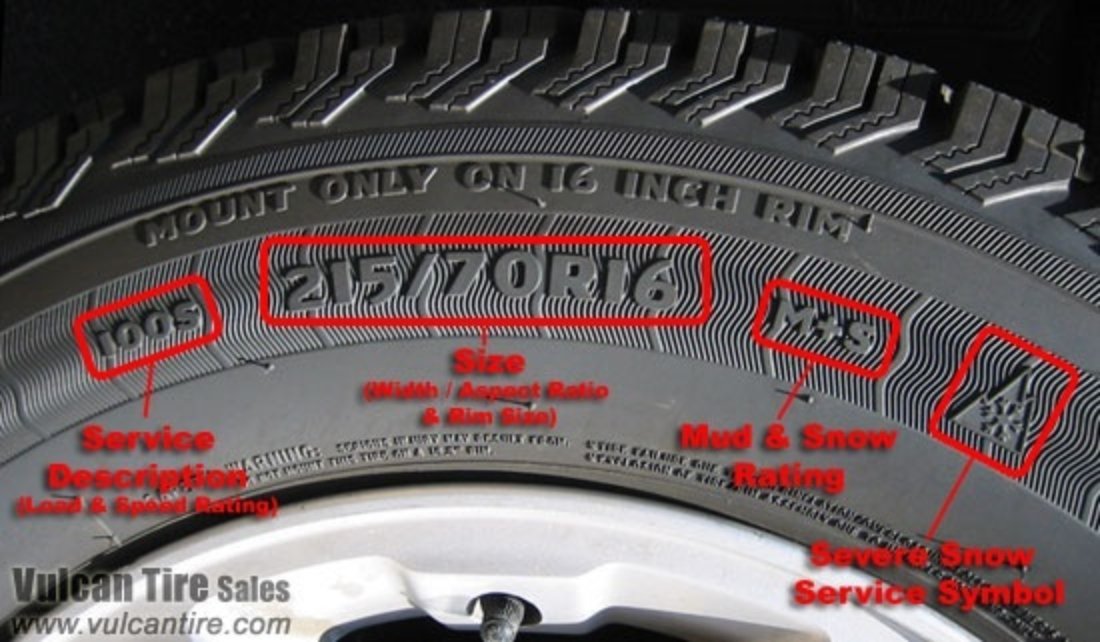 As we mentioned earlier, this is often not the case with many tires simply because it takes time for the tire to reach the United States from the manufacturer. As long as the tires have been stored properly, they will be in excellent condition, even if the DOT Date code is a couple of years old.
As we mentioned earlier, this is often not the case with many tires simply because it takes time for the tire to reach the United States from the manufacturer. As long as the tires have been stored properly, they will be in excellent condition, even if the DOT Date code is a couple of years old.
When stored properly and protected from the elements, tires age quite slowly. The Rubber Manufacturers Association has said there’s no way to put a date on when tires actually “expire.” There are too many factors that impact the true age of a tire.
To help prolong the life of a tire, tire retailers will:
While these are the main contributors to excessive tire aging, it would still take years of exposure in the hottest, wettest, and driest climates for the first signs of tire aging to appear. Tires are durable, and if they’re showing signs of damage within the first few years, it’s a sign of poor quality. Whitening of the rubber and shallow hairline cracks in the upper or lower sidewall may be an indication of UV and heat damage, but these symptoms aren’t issues you commonly see in new tires.
Tires are durable, and if they’re showing signs of damage within the first few years, it’s a sign of poor quality. Whitening of the rubber and shallow hairline cracks in the upper or lower sidewall may be an indication of UV and heat damage, but these symptoms aren’t issues you commonly see in new tires.
Sidewall cracking due to UV rays
Yes, the rubber gets hard over time as the tire loses its elasticity. This happens regardless of how much you use your tires over the course of the years.
Every tire has a birthday, and many tires will not be sold 7 years later. However, since some tires don’t technically become unsafe until a decade after they’re produced, the best advice is to have your tire checked by a professional to make sure they are safe for continued driving.
If you have any questions about your tire’s DOT Code or tire age in general, get in contact and let us assist you!
Create an account for FREE on Tires-Easy. com and discover the Exclusive Member Discounts.
com and discover the Exclusive Member Discounts.
Join Today For Free
As you know, tire marking contains a number of important parameters and characteristics. Also in the marking of tires, the year and week of production of the car tire are encrypted. Given the fact that a tire is a rubber product with a limited service life, it is quite possible to apply such a concept as tire aging to tires.
In other words, rubber ages over time. For this reason, before buying, it is important to pay attention to what date the tire was manufactured. Next, we will look at how to determine the year of manufacture of a tire, where to look and look for the appropriate designations, and what to look for when determining the year of manufacture of tires.
Contents of the article
storage and service.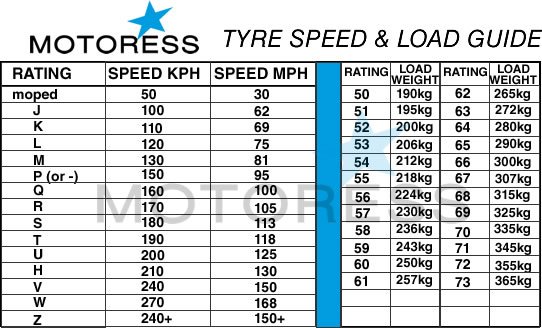 Naturally, it is desirable to purchase only "fresh" tires. In other words, if the tires are new but have been in stock for a long time, in some cases you should not buy such tires or there are reasons to ask the seller for a big discount. Let's figure it out.
Naturally, it is desirable to purchase only "fresh" tires. In other words, if the tires are new but have been in stock for a long time, in some cases you should not buy such tires or there are reasons to ask the seller for a big discount. Let's figure it out.
First of all, when choosing, you need to understand how to find out the date of manufacture of the tire, that is, the week, month and year of production. As a rule, the date of manufacture of the tire is printed on the sidewall of the tire. You should look for an oval stamp with 4 numbers. For example, 1806.
Please note that the first two digits indicate the week of manufacture, while the last two indicate the year. It turns out that the date of manufacture of the tire marked 1806 is the 18th week of 2006, that is, May 2006. You can also use an online calculator on various resources to accurately calculate the date of manufacture of the tire.
Please note that if there are only 3 digits in the release date code, this indicates that the tire was manufactured before 2000, that is, the tire production date indicates a fairly old tire.
At the same time, in such an old-style marking, the first two digits indicate the week of manufacture. In this case, the last digit does not fully indicate the year, but the last digit of the year designation. As an example, code 127 means that a car tire was manufactured on week 12 of 87 or 97.
To determine if a tire was manufactured in 90s or 80s, you need to inspect the sidewall to see if there is a space after the code, a gap or a stamp in the form of a triangle.
If there is only a code without spaces and signs, then the tires are 88 years old. The presence of spaces or icons will indicate that the tire is '98. The reason for this difference in marking, which determines the release date of the tire, is that the tire manufacturers themselves did not initially expect the rubber to be used for more than 10 years.
Further, after 2000, manufacturers switched to a convenient and understandable marking of the tire production date. We also add that before the 3 or 4 digit code there may be more letters and numbers, however, only the last numbers indicate the date of release of the rubber.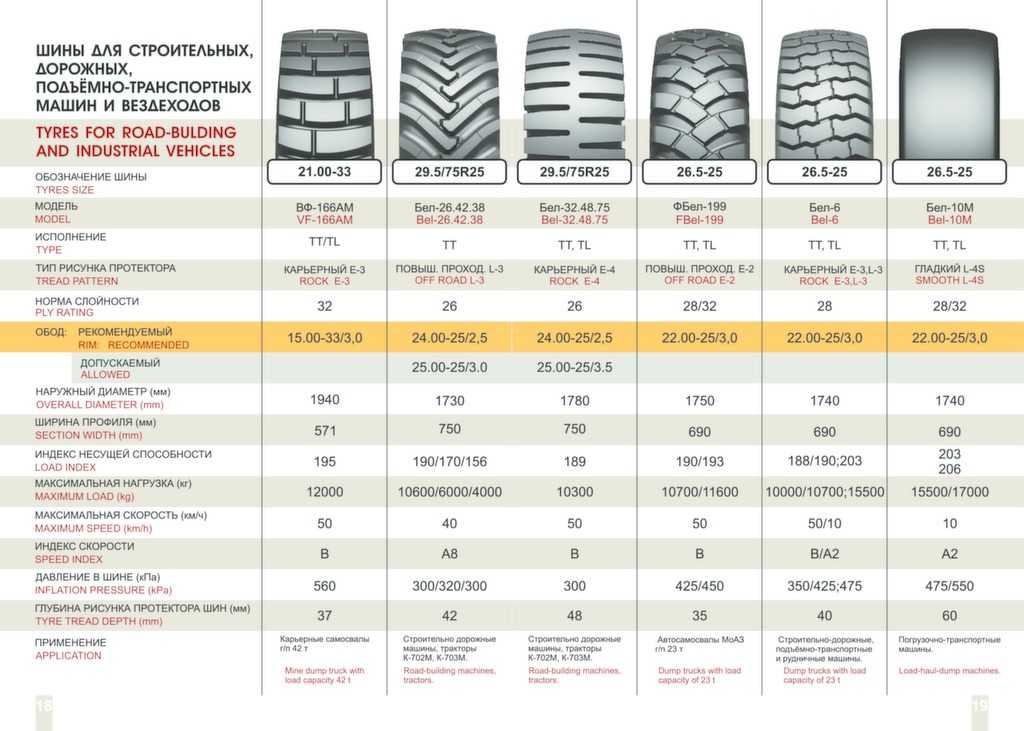
The tire manufacturers themselves provide a 5 year warranty on the tires. This means that the tire will retain all the declared characteristics for the specified period (if its wear does not come earlier). It is important to understand that such a period implies the correct storage conditions. Otherwise, the tire may not fully correspond to the declared characteristics.
As practice shows, tires of good quality may well last longer, while maintaining elasticity and other performance characteristics and indicators. It turns out that the aging of rubber directly depends on the quality of tires, on operating and storage conditions.
As a rule, over time, rubber loses its elasticity, as the chemical composition changes. The chemicals gradually "evaporate", the rubber hardens and tends to crack.
Moreover, under conditions of high temperatures, under the influence of ultraviolet (sunlight) or high humidity, the rubber surface ages much faster. For this reason, it is better to store tires in bags, placing tires in dark, cool rooms. Under such conditions, rubber retains its properties for 7 or even 10 years.
For this reason, it is better to store tires in bags, placing tires in dark, cool rooms. Under such conditions, rubber retains its properties for 7 or even 10 years.
We also recommend reading the article on how the tire marking is deciphered. In this article, you will learn about the main points that you need to pay attention to when deciphering tire markings.
By the way, the external signs of old rubber are small cracks that quickly grow and become deeper. The tire also becomes grayish or whitish instead of black.
Please note that even if the tread is not very worn, but the tire is cracked, “hardened”, turned white, then such tires need to be changed. We also add, if the tires are new, but by the date of issue they are already more than 3 years old, then special attention should be paid to the storage conditions of the rubber.
If the warehouse has suitable temperature conditions and humidity, then the shelf life of tires can reach 5-7 years or more, and there will be no loss of performance. If the tires are lying on the street, in the water or under the scorching sun, it is better to refuse such a purchase, especially if the cost of such rubber does not differ much from “fresh” tires.
If the tires are lying on the street, in the water or under the scorching sun, it is better to refuse such a purchase, especially if the cost of such rubber does not differ much from “fresh” tires.
It turns out that if the tire was produced more than 2 years ago, its external condition should be assessed (presence or absence of cracks, discoloration, elasticity, etc.). Also, the good appearance of the tire often indicates that the storage conditions were acceptable and such rubber can be taken.
However, even for new tires in perfect condition, the age of more than 3 years can be a strong argument for serious bargaining with the seller. The reason is that unscrupulous sellers often hide the signs of tire aging that have appeared by treating them with special compounds.
Another thing to remember is that tires from different manufacturers also age differently. Large global companies sell high quality rubber, constantly conduct research in this area, introduce unique patented chemical additives into rubber, etc. The result is a long service life.
The result is a long service life.
Lesser known manufacturers save money to compete in the budget segment. It turns out that initially cheap tires can age much faster. For example, if a Michelin or Nokian tire turns out to be quite normal even after 4 years, a cheap Rosava can crack and lose elasticity after a couple of years.
When choosing new tires for the long term, always opt for fresher tires. At the same time, “fresh” is an age of up to 2 years for tires of the middle class and premium segment, or 1 year for budget wheels.
This approach ensures that the storage conditions do not seriously affect the properties of the rubber. In practice, both a two-year-old tire and a tire released a couple of months ago are practically no different.
Also, buying high-quality tires, if the tread is not worn off earlier, such tires may well last more than 5-7 years. If the rubber is budgetary, even if the tread is not very worn out, such tires can become unusable after 3-4 years. It is also better to change them immediately at the first appearance of signs of aging. In other words, the performance and service life of rubber is largely dependent on the quality of the tire itself.
If the rubber is budgetary, even if the tread is not very worn out, such tires can become unusable after 3-4 years. It is also better to change them immediately at the first appearance of signs of aging. In other words, the performance and service life of rubber is largely dependent on the quality of the tire itself.
To extend the life of a tire and slow down the aging of car tires, you should:
As a result, we note that the year of manufacture of rubber is an important parameter that must be paid attention to. Also, compliance with the above rules and recommendations will significantly increase the life of car tires, as well as maintain all the declared characteristics and performance of tires for 5, 7 or even 10 years.
Every driver who buys a new set of tires expects to receive a product of the current year, since old tires, even without being in operation, may partially (or even completely!) Lose their characteristics as a result of improper storage and aging.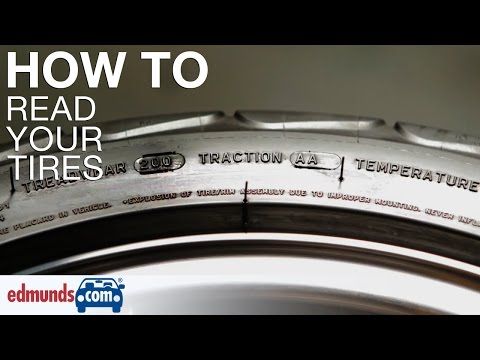 And in order to fully meet expectations, motorists should know how to determine the date of manufacture of a tire (year and month). In addition, we will tell you as clearly as possible about how to understand whether a tire is suitable for further use, which will be very useful for those who prefer to buy used tires.
And in order to fully meet expectations, motorists should know how to determine the date of manufacture of a tire (year and month). In addition, we will tell you as clearly as possible about how to understand whether a tire is suitable for further use, which will be very useful for those who prefer to buy used tires.
Content of the article:
So, let's understand how to determine the age of rubber, whether it is possible , and how old tires are suitable for use.
Answering this question, first of all, it should be mentioned that each tire has a special marking on the side surface, which is an oval stamp with numbers inside. However, today you can find tires in which the specified marker has both 3 and 4 digits. A three-digit code on the sidewall means that this tire was produced before the year 2000, and a four-digit one, respectively, after.
According to the regulation of the Department of Transportation, which certifies tires for distribution in the domestic market, this marking must be applied to the surface of the tires without fail and in a clearly marked form. This rule applies to all tire models from all manufacturers oriented to the North American market, where DOT certification is mandatory without exception. Because of this fact, all the world's leading brands in the tire industry, regardless of the geography of distribution and production of their goods, follow this rule.
Later marking is deciphered as follows:
For example, if *1805* is indicated on the lateral surface of the rubber in an oval stamp, this means that the tire left the assembly line in April 2005.
Here I must say that to simplify the calculations on many automotive sites there are special calculators for calculating the desired date of manufacture. Using them is very simple, just enter a number in a special box, and almost instantly the date of manufacture corresponding to this code will appear in the next window.
The situation with tires manufactured at the end of the last century is a little more complicated, or rather, more confusing. The three-digit marking is essentially the same as the new four-digit code. The difficulty lies in the fact that instead of the last two digits, there is only one in it, and it does not mean the full year, but only its last digit. In other words, the 8 at the end of the code may indicate that the rubber was produced in both 1988 and 1998.
You can distinguish the year of issue by the presence or absence of a space (or triangle) after the digital value. If a space is present (*148_*), then the tire was made in 1998th, if not (*148*) - then in 1988.
These difficulties are explained by the fact that tire manufacturers of the past century did not hope that their tires would last more than a dozen years. In the same century, tire manufacturers changed the coding of wheel tires to a more practical and convenient one. It should also be mentioned that sometimes numbers may be preceded by alphabetic characters, for example: *NAA 427* or *LMLR3809*. However, they have nothing to do with the date of manufacture of tires, so the average car enthusiast should not pay attention to them. Obviously, there is nothing complicated in the process of determining the production date. You just need to be careful and remember these nuances.
If car tires have not worn out ahead of time, then their service life (preservation of the declared driving performance) must be at least five years. This is guaranteed by all well-known manufacturers. In practice, in the case of proper care and careful use, tires are quite capable of lasting much longer than the specified minimum. At the same time, they can maintain both operational characteristics, elasticity, and appearance.
Tire aging primarily depends on its quality. But this parameter is significantly affected by the operating and storage conditions of the wheels. Over time, tires lose their elasticity and become harder. This process is accelerated by exposure to high temperatures, direct sunlight, and moisture. Therefore, in the off-season, it is better to store tires packed in special plastic bags that prevent direct contact of the rubber with the external environment and direct exposure to ultraviolet radiation.
Beaded wheels should be stored inflated and hung on the walls of a dry and dark room (attic or garage), and tires removed from the rims should be stored in stacks or vertically. In the latter case, from time to time they need to be swapped or rotated. In addition, today many car centers offer a tire storage service, for which they have specialized rooms equipped with special racks. With such storage and compliance with all the rules, automotive rubber can retain elasticity for up to ten years.
Aged tires can be easily identified by the condition of their sidewalls. When the rubber dries and hardens, microcracks appear on its surface, which increase in size over time. In addition, aging can also be seen in the color of the tire, which becomes whitish instead of jet black. These are characteristic features that are easy enough to see. And in the case when they become obvious, the rubber should be changed, even if the tire tread is worn slightly, and looks pretty decent.
Many car owners are wondering if it makes sense to buy new tires (not used), made two or three years ago? It all depends on many factors. But the main ones remain the same - the original quality and conditions of storage and transportation. The quality is directly related to the brand. Tire market leaders spend huge amounts of money on all kinds of research and testing of their products. As a result, all kinds of additives are added to the composition of their tires, which act as "anti-aging agents" and are a trade secret. Therefore, when buying tires of a famous brand, you can not worry about quality and durability, but you will have to overpay a certain amount for this.
Each supplier and seller of tires has its own storage facilities and vehicles for transporting goods. It is quite natural that large and reputable companies can afford to equip them with the latest technology, and therefore in compliance with optimal storage / transportation conditions. With such care, tires will practically not lose their original characteristics even after several years.
Based on the above, we can draw the following conclusion. Even if the tires are made a few years ago, but properly stored and of excellent quality, they are almost indistinguishable from new ones. And if such rubber outwardly looks fresh, and when examining its surfaces, no cracks and pale areas were found, then it can be safely purchased. And here it must be said that, other things being equal, last year's model will cost less than just off the assembly line.
Most experts and car enthusiasts agree and recommend the following.
In conclusion, we recall that you need to pay attention to the date of production, both when purchasing used tires and when buying new tires, because it often happens that three-four-year-old models are bought in bulk abroad and sold in the domestic market as the novelty of the season.